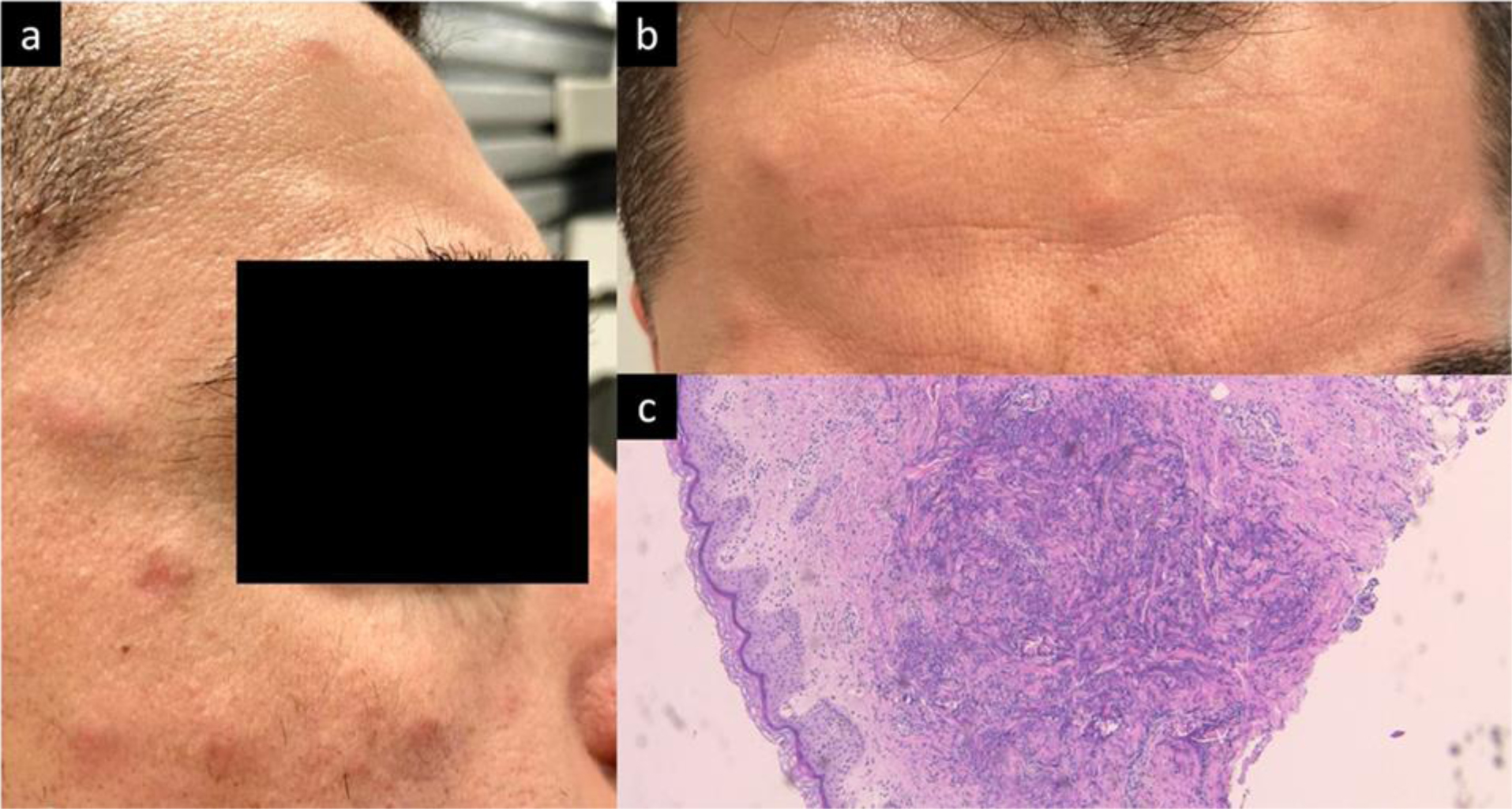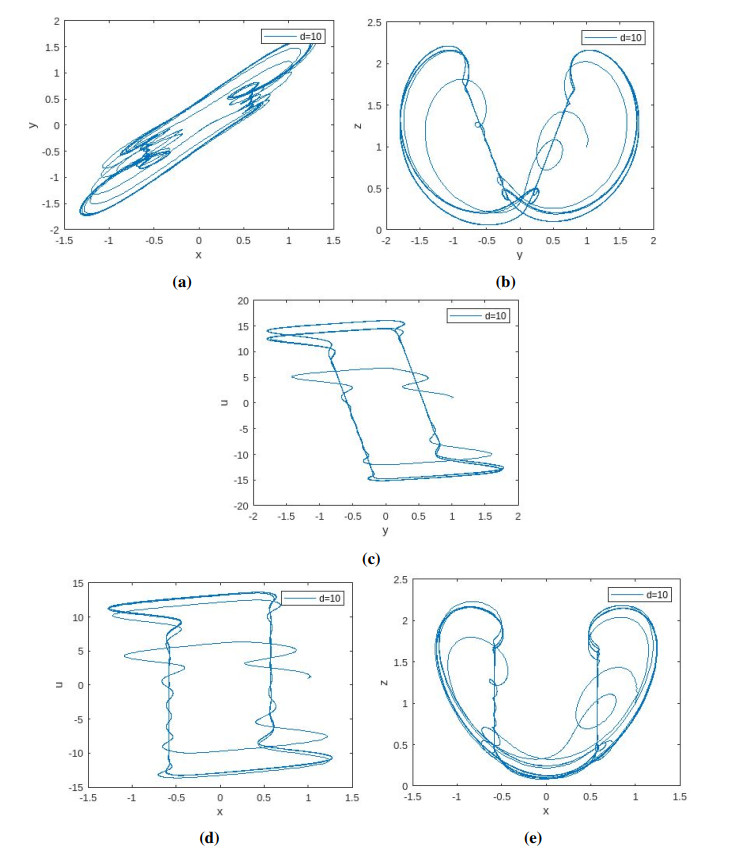|
[1]
|
K. B. Oldham, J. Spanier, The fractional calculus: Theory and applications of differentiation and integration to arbitrary order, Mathematics in Science and Engineering, Academic Press, 111 (1974).
|
|
[2]
|
M. Caputo, M. Fabrizio, A new definition of fractional derivative without singular kernel, Prog. Fract. Differ. Appl., 1 (2015), 73–85. https://doi.org/10.12785/pfda/010201 doi: 10.12785/pfda/010201

|
|
[3]
|
A. Atangana, D. Baleanu, New fractional derivatives with nonlocal and nonsingular kernel: Theory and application to heat transfer model, Therm. Sci., 20 (2016), 763–769. https://doi.org/10.2298/TSCI160111018A doi: 10.2298/TSCI160111018A

|
|
[4]
|
A. B. M. Alzahrani, R. Saadeh, M. A. Abdoon, M. Elbadri, M. Berir, A. Qazza, Effective methods for numerical analysis of the simplest chaotic circuit model with Atangana-Baleanu Caputo fractional derivative, J. Eng. Math., 144 (2024), 9. https://doi.org/10.1007/s10665-023-10319-x doi: 10.1007/s10665-023-10319-x

|
|
[5]
|
L. Song, W. Yu, Y. Tan, K. Duan, Calculations of fractional derivative option pricing models based on neural network, J. Comput. Appl. Math., 437 (2024), 115462. https://doi.org/10.1016/j.cam.2023.115462 doi: 10.1016/j.cam.2023.115462

|
|
[6]
|
A. M. Alqahtani, A. Chaudhary, R. S. Dubey, S. Sharma, Comparative analysis of the chaotic behavior of a five-dimensional fractional hyperchaotic system with constant and variable order, Fractal Fract., 8 (2024), 421. https://doi.org/10.3390/fractalfract8070421 doi: 10.3390/fractalfract8070421

|
|
[7]
|
A. D. Matteo, P. D. Spanos, Determination of nonstationary stochastic response of linear oscillators with fractional derivative elements of rational Order, ASME. J. Appl. Mech., 91 (2024), 041008. https://doi.org/10.1115/1.4064143 doi: 10.1115/1.4064143

|
|
[8]
|
G. Barbero, L. R. Evangelista, R. S. Zola, E. K. Lenzi, A. M. Scarfone, A brief review of fractional calculus as a tool for applications in physics: Adsorption phenomena and electrical impedance in complex fluids, Fractal Fract., 8 (2024), 369. https://doi.org/10.3390/fractalfract8070369 doi: 10.3390/fractalfract8070369

|
|
[9]
|
R. Wang, Y. Sui, Method for measuring the fractional derivative of a two-dimensional magnetic field based on Taylor-Riemann series, Fractal Fract., 8 (2024), 375. https://doi.org/10.3390/fractalfract8070375 doi: 10.3390/fractalfract8070375

|
|
[10]
|
S. Sharma, R. S. Dubey, A. Chaudhary, Caputo fractional model for the predator-prey relation with sickness in prey and refuge to susceptible prey, Int. J. Math. Ind., 1 (2024), 2450014. https://doi.org/10.1142/S266133522450014X doi: 10.1142/S266133522450014X

|
|
[11]
|
M. A. Almuqrin, P. Goswami, S. Sharma, I. Khan, R. S. Dubey, A. Khan, Fractional model of Ebola virus in population of bats in frame of Atangana-Baleanu fractional derivative, Results Phys., 26 (2021), 104295. https://doi.org/10.1016/j.rinp.2021.104295 doi: 10.1016/j.rinp.2021.104295

|
|
[12]
|
S. Althubiti, S. Sharma, P. Goswami, R. S. Dubey, Fractional SIAQR model with time dependent infection rate, Arab J. Basic Appl. Sci., 30 (2023), 307–316. https://doi.org/10.1080/25765299.2023.2209981 doi: 10.1080/25765299.2023.2209981

|
|
[13]
|
B. B. Mandelbrot, Fractal geometry: What is it, and what does it do? Proc. R. Soc. Lond., 423 (1989), 3–16. https://doi.org/10.1098/rspa.1989.0038 doi: 10.1098/rspa.1989.0038

|
|
[14]
|
J. H. He, A new fractal derivation, Therm. Sci., 15 (2011), 145–147. https://doi.org/10.2298/TSCI11S1145H doi: 10.2298/TSCI11S1145H

|
|
[15]
|
J. H. He, Y. O. El-DiB, A tutorial introduction to the two-scale fractal calculus and its application to the fractal Zhiber-Shabat Oscillator, Fractals, 29 (2021), 2150268. https://doi.org/10.1142/S0218348X21502686 doi: 10.1142/S0218348X21502686

|
|
[16]
|
C. H. He, H. Liu, C. Liu, A fractal-based approach to the mechanical properties of recycled aggregate concretes, Facta. Univ.-Ser. Mech., 22 (2024), 329–342. https://doi.org/10.22190/fume240605035h doi: 10.22190/fume240605035h

|
|
[17]
|
C. H. He, C. Liu, Fractal dimensions of a porous concrete and its effect on the concrete's strength, Facta. Univ.-Ser. Mech., 21 (2023), 137–150. https://doi.org/10.22190/fume221215005h doi: 10.22190/fume221215005h

|
|
[18]
|
S. Abbas, Z. U. Nisa, M. Nazar, M. Amjad, H. Ali, A. Z. Jan, Application of heat and mass transfer to convective flow of Casson fluids in a microchannel with Caputo-Fabrizio derivative approach, Arab J. Sci. Eng., 49 (2024), 1275–1286. https://doi.org/10.1007/s13369-023-08351-1 doi: 10.1007/s13369-023-08351-1

|
|
[19]
|
B. S. N. Murthy, M. N. Srinivas, V. Madhusudanan, A. Zeb, E. M. T. Eldin, S. Etemad, et al., The impact of Caputo-Fabrizio fractional derivative and the dynamics of noise on worm propagation in wireless IoT networks, Alex. Eng. J., 91 (2024), 558–579. https://doi.org/10.1016/j.aej.2024.02.027 doi: 10.1016/j.aej.2024.02.027

|
|
[20]
|
A. Chavada, N. Pathak, Transmission dynamics of breast cancer through Caputo Fabrizio fractional derivative operator with real data, Math. Model. Control., 4 (2024), 119–132. https://doi.org/10.3934/mmc.2024011 doi: 10.3934/mmc.2024011

|
|
[21]
|
O. E. Rossler, An equation for hyperchaos, Physics Lett. A., 71 (1979), 155–157. https://doi.org/10.1016/0375-9601(79)90150-6 doi: 10.1016/0375-9601(79)90150-6

|
|
[22]
|
U. Erkan, A. Toktas, Q. Lai, 2D hyperchaotic system based on Schaffer function for image encryption, Expert Syst. Appl., 213 (2023), 119076. https://doi.org/10.1016/j.eswa.2022.119076 doi: 10.1016/j.eswa.2022.119076

|
|
[23]
|
S. Zhu, X. Deng, W. Zhang, C. Zhu, Construction of a new 2D hyperchaotic map with application in efficient pseudo-random number generator design and color image encryption, Mathematics., 11 (2023), 3171. https://doi.org/10.3390/math11143171 doi: 10.3390/math11143171

|
|
[24]
|
J. Tang, Z. Zhang, T. Huang, Two-dimensional cosine-sine interleaved chaotic system for secure communication, IEEE T. Circuits-II, 71 (2024), 2479–2483. https://doi.org/10.1109/TCSII.2023.3337145 doi: 10.1109/TCSII.2023.3337145

|
|
[25]
|
W. Li, W. Yan, R. Zhang, C. Wang, Q. Ding, A new 3D discrete hyperchaotic system and its application in secure transmission, Int. J. Bifurc. Chaos Appl., 29 (2019), 1950206. https://doi.org/10.1142/S0218127419502067 doi: 10.1142/S0218127419502067

|
|
[26]
|
W. J. Zhi, C. Z. Qiang, Y. Z. Zhi, The generation of a hyperchaotic system based on a three-dimensional autonomous chaotic system, Chinese Phys., 15 (2006), 6. https://doi.org/10.1088/1009-1963/15/6/015 doi: 10.1088/1009-1963/15/6/015

|
|
[27]
|
A. Sahasrabuddhe, D. S. Laiphrakpam, Multiple images encryption based on 3D scrambling and hyper-chaotic system, Inf. Sci., 550 (2021), 252–267. https://doi.org/10.1016/j.ins.2020.10.031 doi: 10.1016/j.ins.2020.10.031

|
|
[28]
|
H. Wang, G. Dong, New dynamics coined in a 4-D quadratic autonomous hyper-chaotic system, Appl. Math. Comput., 346 (2019), 272–286. https://doi.org/10.1016/j.amc.2018.10.006 doi: 10.1016/j.amc.2018.10.006

|
|
[29]
|
T. Nestor, A. Belazi, B. Abd-El-Atty, M. N. Aslam, C. Volos, N. J. De Dieu, et al., A new 4D hyperchaotic system with dynamics analysis, synchronization, and application to image encryption, Symmetry, 14 (2022), 424. https://doi.org/10.3390/sym14020424 doi: 10.3390/sym14020424

|
|
[30]
|
X. Liu, X. Tong, M. Zhang, Z. Wang, A highly secure image encryption algorithm based on conservative hyperchaotic system and dynamic biogenetic gene algorithms, Chaos Soliton. Fract., 171 (2023), 113450. https://doi.org/10.1016/j.chaos.2023.113450 doi: 10.1016/j.chaos.2023.113450

|
|
[31]
|
Y. Hui, H. Liu, P. Fang, A DNA image encryption based on a new hyperchaotic system, Multimed. Tools Appl., 82 (2023), 21983–22007. https://doi.org/10.1007/s11042-021-10526-7 doi: 10.1007/s11042-021-10526-7

|
|
[32]
|
R. B. Naik, U. Singh, A review on applications of chaotic maps in psuedo-random number generators and encryption, Ann. Data Sci., 11 (2024), 25–50. https://doi.org/10.1007/s40745-021-00364-7 doi: 10.1007/s40745-021-00364-7

|
|
[33]
|
T. Bonny, R. A. Debsi, S. Majzoub, A. S. Elwakil, Hardware optimized FPGA implementations of high-speed true random bit generators based on switching-type chaotic oscillators, Circ. Syst. Signal Pr., 38 (2019), 1342–1359. https://doi.org/10.1007/s00034-018-0905-6 doi: 10.1007/s00034-018-0905-6

|
|
[34]
|
K. W. Wong, Q. Z. Liu, J. Y. Chen, Simultaneous arithmetic coding and encryption using chaotic maps, IEEE T. Circuits-II, 57 (2010), 146–150. https://doi.org/10.1109/TCSII.2010.2040315 doi: 10.1109/TCSII.2010.2040315

|
|
[35]
|
Z. N. A. Kateeb, S. J. Mohammed, Encrypting an audio file based on integer wavelet transform and hand geometry, Telkomnika, 18 (2020). https://doi.org/10.12928/TELKOMNIKA.v18i4.14216 doi: 10.12928/TELKOMNIKA.v18i4.14216

|
|
[36]
|
K. Benkouider, A. Sambas, T. Bonny, W. A. Nassan, I. A. R. Moghrabi, I. M. Sulaiman, et al., A comprehensive study of the novel 4D hyperchaotic system with self-exited multistability and application in the voice encryption, Sci. Rep., 14 (2024), 12993. https://doi.org/10.1038/s41598-024-63779-1 doi: 10.1038/s41598-024-63779-1

|
|
[37]
|
H. Wen, Y. Lin, Z. Xie, T. Liu, Chaos-based block permutation and dynamic sequence multiplexing for video encryption, Sci. Rep., 13 (2023), 14721. https://doi.org/10.1038/s41598-023-41082-9 doi: 10.1038/s41598-023-41082-9

|
|
[38]
|
A. Yousefpour, H. Jahanshahi, J. M. M. Pacheco, S. Bekiros, Z. Wei, A fractional-order hyper-chaotic economic system with transient chaos, Chaos Soliton. Fract., 130 (2020), 109400. https://doi.org/10.1016/j.chaos.2019.109400 doi: 10.1016/j.chaos.2019.109400

|
|
[39]
|
L. Pan, W. Zhou, L. Zhou, K. Sun, Chaos synchronization between two different fractional-order hyperchaotic systems, Commun. Nonlinear Sci., 16 (2011), 2628–2640. https://doi.org/10.1016/j.cnsns.2010.09.016 doi: 10.1016/j.cnsns.2010.09.016

|
|
[40]
|
Q. Shi, X. An, L. Xiong, F. Yang, L. Zhang, Dynamic analysis of a fractional-order hyperchaotic system and its application in image encryption, Phys. Scr., 97 (2022), 045201. https://doi.org/10.1088/1402-4896/ac55bb doi: 10.1088/1402-4896/ac55bb

|
|
[41]
|
H. Deng, T. Li, Q. Wang, H. Li, A fractional-order hyperchaotic system and its synchronization, Chaos Soliton. Fract., 41 (2009), 962–969. https://doi.org/10.1016/j.chaos.2008.04.034 doi: 10.1016/j.chaos.2008.04.034

|
|
[42]
|
M. A. Balootaki, H. Rahmani, H. Moeinkhah, A. Mohammadzadeh, On the synchronization and stabilization of fractional-order chaotic systems: Recent advances and future perspectives, Physica A, 551 (2020), 124203. https://doi.org/10.1016/j.physa.2020.124203 doi: 10.1016/j.physa.2020.124203

|
|
[43]
|
Z. A. S. A. Rahman, B. H. Jasim, Y. I. A. Al-Yasir, Y. F. Hu, R. A. A. Alhameed, B. N. Alhasnawi, A new fractional-order chaotic system with its analysis, synchronization, and circuit realization for secure communication applications, Mathematics, 9 (2021), 2593. https://doi.org/10.3390/math9202593 doi: 10.3390/math9202593

|
|
[44]
|
O. M. Fuentes, J. J. M. Garcia, J. F. G. Aguilar, Generalized synchronization of commensurate fractional-order chaotic systems: Applications in secure information transmission. Digit. Signal Process., 126 (2022), 103494. https://doi.org/10.1016/j.dsp.2022.103494 doi: 10.1016/j.dsp.2022.103494

|
|
[45]
|
S. Xu, X. Wang, X. Ye, A new fractional-order chaos system of Hopfield neural network and its application in image processing, Chaos Soliton. Fract., 157 (2022), 111889. https://doi.org/10.1016/j.chaos.2022.111889 doi: 10.1016/j.chaos.2022.111889

|
|
[46]
|
L. Chen, H. Yin, T. Huang, L. Yuan, S. Zheng, L. Yin, Chaos in fractional-order discrete neural networks with application to image encryption, Neural Networks, 125 (2020), 174–184. https://doi.org/10.1016/j.neunet.2020.02.008 doi: 10.1016/j.neunet.2020.02.008

|
|
[47]
|
S. Fu, X. F. Cheng, J. Liu, Dynamics, circuit design, feedback control of a new hyperchaotic system and its application in audio encryption, Sci. Rep., 13 (2023), 19385. https://doi.org/10.1038/s41598-023-46161-5 doi: 10.1038/s41598-023-46161-5

|
|
[48]
|
J. Losada, J. J. Nieto, Properties of a new fractional derivative without singular kernel, Progr. Fract. Differ. Appl., 1 (2015), 87–92. https://doi.org/10.12785/pfda/010202 doi: 10.12785/pfda/010202

|
|
[49]
|
M. Toufik, A. Atangana, New numerical approximation of fractional derivative with non-local and non-singular kernel, Eur. Phys. J. Plus., 132 (2017), 444. https://doi.org/10.1140/epjp/i2017-11717-0 doi: 10.1140/epjp/i2017-11717-0

|
|
[50]
|
R. Batogna, A. Atangana, New two step Laplace Adam-Bashforth method for integer and noninteger order partial differential equations, Numer. Meth. Part. D. E., 34 (2017), 1739–1785. https://doi.org/10.1002/num.22216 doi: 10.1002/num.22216

|










 DownLoad:
DownLoad:






















